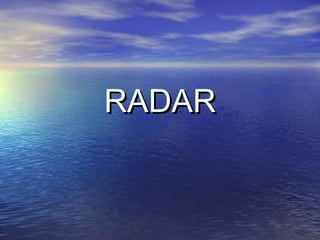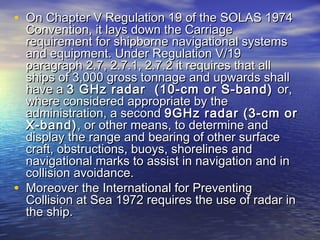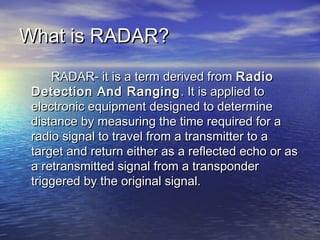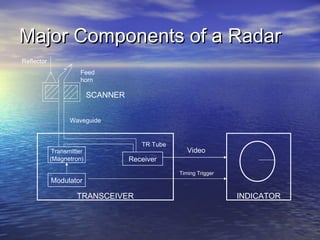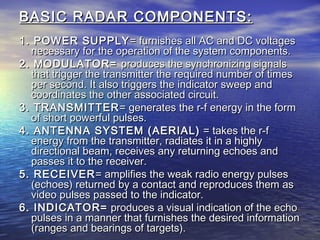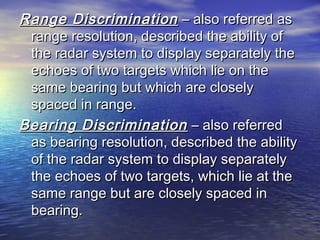The document discusses the components and basic principles of radar. It explains that radar works by transmitting short bursts of radio signals and measuring the time it takes for those signals to reflect off objects and return. It identifies the three major components of radar as the scanner, transceiver, and indicator. The scanner rotates and transmits the radio signals, while the transceiver contains the transmitter and receiver. The indicator displays the objects detected by radar to help with navigation and collision avoidance. Basic radar components include a power supply, modulator, transmitter, and antenna system.
